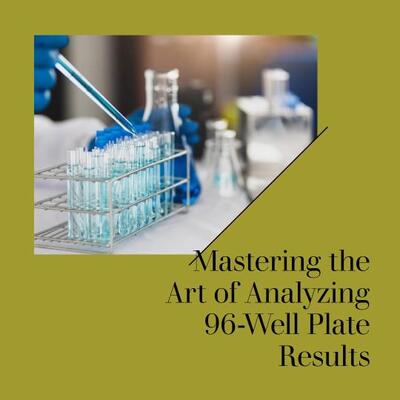- 1-905-452-8193
- Contact Us
- Member Login
- Get Listed Today
- 220,911 members

Analyzing results from a 96-well plate template is a crucial step in various scientific and medical research fields, such as molecular biology, biochemistry, and drug discovery. This guide will provide you with a step-by-step process for effectively interpreting data obtained from a 96-well plate experiment. Whether you are measuring enzyme activity, cell viability, or protein concentration, mastering this skill is essential for obtaining accurate and meaningful results. In this comprehensive guide, we will cover everything from preparing your plate to interpreting the data, ensuring you have a solid foundation for success in your research endeavors.
Understanding the 96-Well Plate Template
Before diving into the analysis process, it's vital to comprehend the 96-well plate template itself. A 96-well plate consists of 12 rows and 8 columns, totaling 96 individual wells. These wells are typically used to hold small volumes of liquids, ranging from microliters to milliliters, making them ideal for various biochemical assays and experiments. Each well can be considered as an independent sample container, allowing you to perform multiple tests simultaneously, saving time and resources.
Preparing Your 96-Well Plate
Labeling: Begin by labeling your 96-well plate appropriately. Ensure that you mark the plate with the necessary information, such as sample names, concentrations, and any other relevant details. Proper labeling is critical for organizing and interpreting your results accurately.
Adding Samples: Carefully pipette or dispense your samples into the designated wells. Be precise with your measurements, as even a slight error can affect the reliability of your results.
Controls: Include control wells on your plate. These wells serve as references to validate your experimental data. Typically, you'll have positive controls (known outcomes) and negative controls (no expected outcome).
Sealing and Incubation: Seal the plate to prevent contamination or evaporation. Incubate the plate as required for your specific experiment, allowing reactions to occur.
Performing the Experiment
Depending on your research goals, you may conduct various assays within the 96-well plate. Some common examples include enzyme assays, cell viability assays, and ELISAs. Follow the protocol for your specific assay, ensuring all steps are carried out accurately and consistently.
Data Collection
Once your experiment is complete, it's time to gather the data. Using appropriate instruments like plate readers or microplate spectrophotometers, measure the desired parameters within each well. The data collected may include absorbance readings, fluorescence intensities, or luminescence values, depending on your assay.
Data Analysis
Data Reduction: Calculate the averages and standard deviations for each set of replicates within the plate. This will help you summarize and understand the variation in your results.
Graphical Representation: Create graphs or charts to visualize your data effectively. Common types of graphs include bar graphs, scatterplots, and dose-response curves, depending on your experiment.
Statistical Analysis: Perform statistical tests, such as t-tests or ANOVA, to determine the significance of differences between samples and controls. This step is crucial for drawing meaningful conclusions from your data.
Interpreting Results
Carefully examine your data, taking into account the experimental context and your research objectives. Discuss any trends, anomalies, or unexpected outcomes. Your interpretation should be guided by the scientific questions you aimed to address with your experiment.
Conclusion
Analyzing results from a 96-well plate template is a fundamental skill for researchers across various disciplines. This comprehensive guide has walked you through the entire process, from plate preparation to data analysis and interpretation. By following these steps meticulously, you'll be well-equipped to draw meaningful conclusions from your experiments and contribute to the advancement of science in your field.
For more resources and insights into various research techniques, visit sportzpari.com to explore a wide range of informative articles and guides related to scientific research and laboratory practices.
